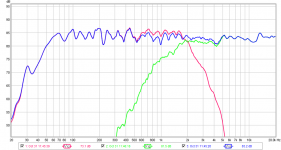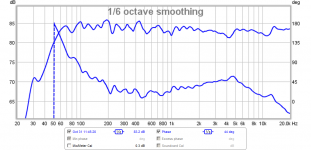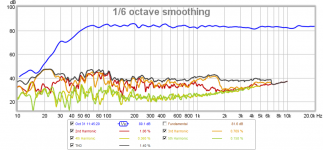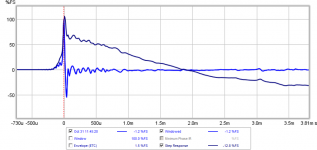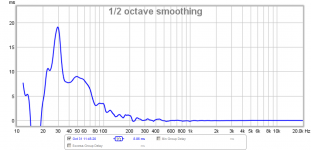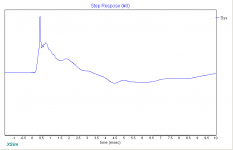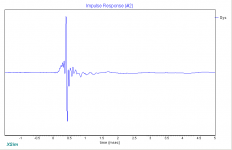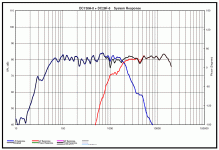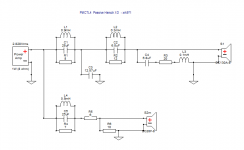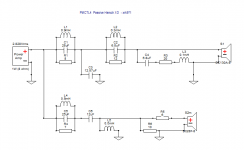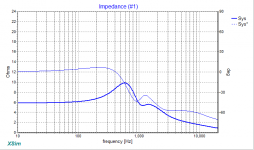I've been told that there is up to 3dB gain per boundary up to a maximum of 9 in a corner so my mains are fairly close to that.
It was a little bit less in the old place which I put down to higher ceilings, the bay window they were situated either side of and the space to the sidewalls.
Back then I measured 6.5dB of extra bass compared to free-standing.
Sounds like a plan that 3way TL idea however I'd be inclined to up the budget a bit and pop for this woofer:
FaitalPRO 10RS350 8ohm 10 250 watt PA Speaker
However that might be worth another thread since this one is supposed to be about xrk's lovely little PMC clones, not something I've quickly thrown together and got lucky with.
It was a little bit less in the old place which I put down to higher ceilings, the bay window they were situated either side of and the space to the sidewalls.
Back then I measured 6.5dB of extra bass compared to free-standing.
Sounds like a plan that 3way TL idea however I'd be inclined to up the budget a bit and pop for this woofer:
FaitalPRO 10RS350 8ohm 10 250 watt PA Speaker
However that might be worth another thread since this one is supposed to be about xrk's lovely little PMC clones, not something I've quickly thrown together and got lucky with.
I'd imagine some simple frame damping mods and foam around the magnet on the Dayton midbass might also help - cousin billy might chime in here
Sent from my iPhone using Tapatalk
Sent from my iPhone using Tapatalk
Last edited:
Final Measurements with Rebate/Brillo and no EQ
Measurements performed after all EQ removed from tweeter except for +1.5dB Q=1.2 at 5.1kHz.
It does sound better now - the highs are very smooth and no sign of harshness. Bass has nice extension to 50Hz (f3) now with mild +1.5dB low shelf at 70Hz Q=0.8.
I think this configuration is good enough to lock down and just enjoy now. Also start building the stereo pair.
Listening to it right now and just really enjoying the music these can play. The produce a surprising amount of bass and I have them stand mounted in the open so no wall reinforcement. When listening while looking away I have to remind myself that these are the basic 5.25in mid woofers offered by Dayton. Very pleased with this speaker right now. 😀
XO plot:
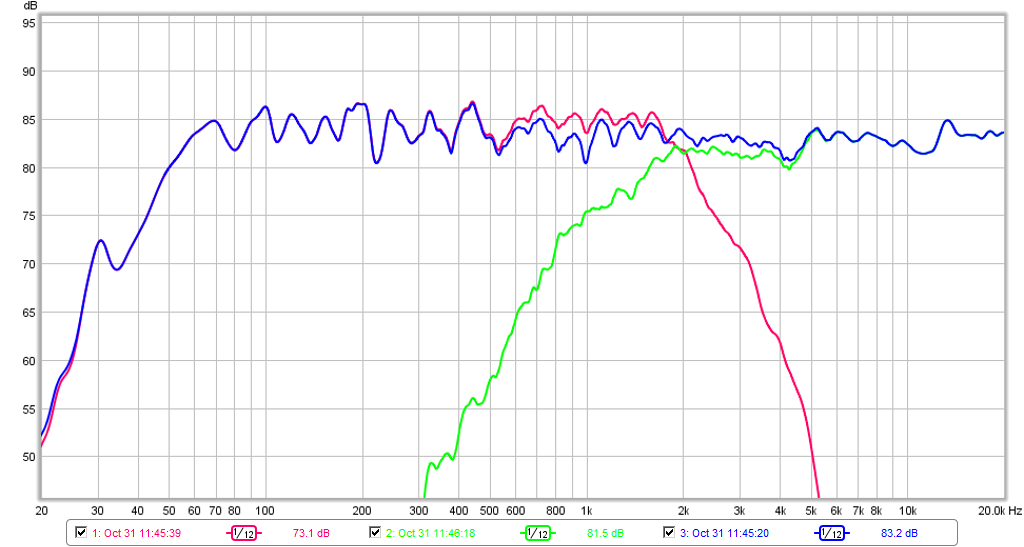
Phase:
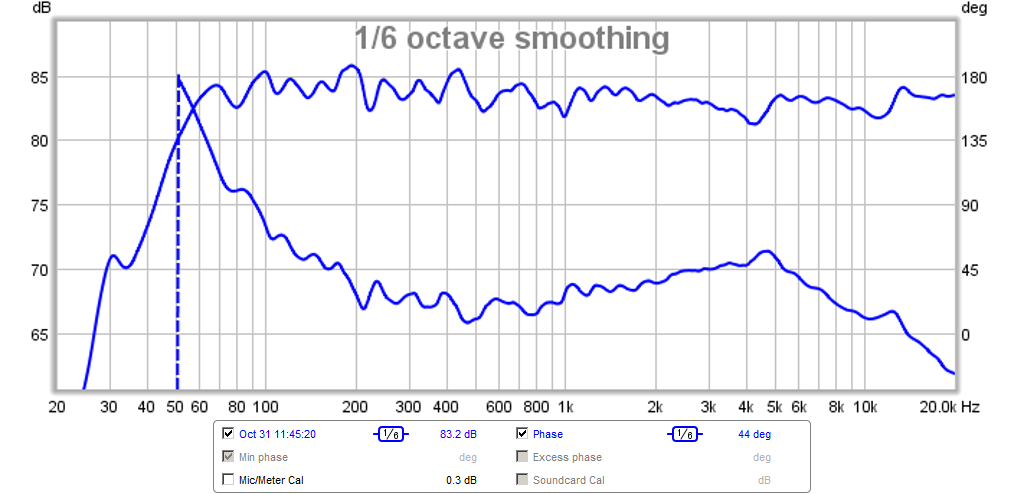
HD - about 1.3%HD at 50Hz at 80dB:
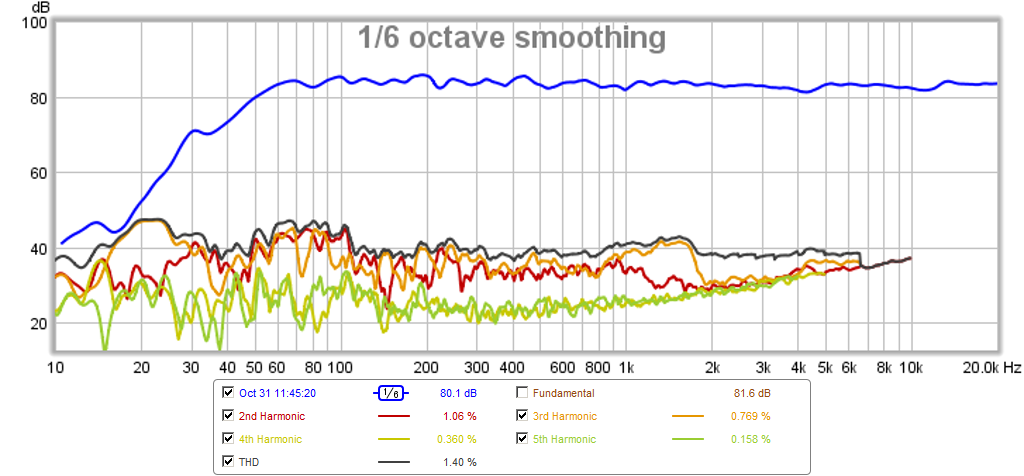
IR/SR - looks cleaner now and is consistent at all polar angles measured:
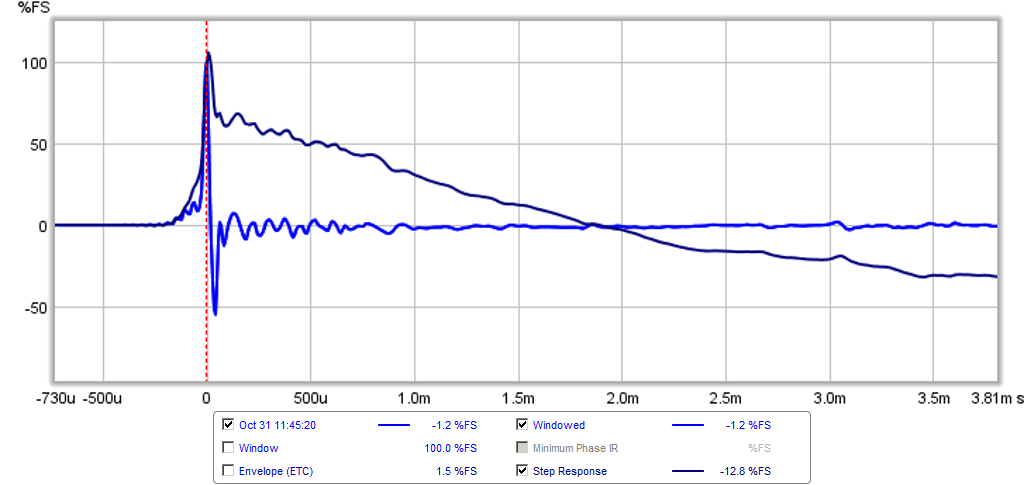
GD - still 8.6ms at 50Hz:

Measurements performed after all EQ removed from tweeter except for +1.5dB Q=1.2 at 5.1kHz.
It does sound better now - the highs are very smooth and no sign of harshness. Bass has nice extension to 50Hz (f3) now with mild +1.5dB low shelf at 70Hz Q=0.8.
I think this configuration is good enough to lock down and just enjoy now. Also start building the stereo pair.
Listening to it right now and just really enjoying the music these can play. The produce a surprising amount of bass and I have them stand mounted in the open so no wall reinforcement. When listening while looking away I have to remind myself that these are the basic 5.25in mid woofers offered by Dayton. Very pleased with this speaker right now. 😀
XO plot:

Phase:

HD - about 1.3%HD at 50Hz at 80dB:

IR/SR - looks cleaner now and is consistent at all polar angles measured:

GD - still 8.6ms at 50Hz:

Attachments
Last edited:
You shd take this build to PE tech talk forum imo
Yes, I thought about that but don't want to set up yet another forum ID that I would then have multiple forums to watch and post. I suppose someone with an ID there could link this thread onto PE TT.
Anyhow, I enjoy jazz and this speaker really hits the spot being pretty compact, unassuming, but wow really delivers. Just listen to this clip of one my favorite Chick Corea trio from Trilogy.
The transient perfect nature really gives the bass, drums, and piano - all percussive instruments some bite and crispness without being harsh. Very engaging and just enough bass at 50Hz to give a sense of the kick drum.
The new rabated baffle, with brillo pad diffraction reducer, no-EQ configuration sounds so musical - just a fantastic little performer.
Have a listen!
Attachments
Looking damn good xrk!
Couldn't find actual measurements of the PMC inspiration but here are some for the bigger, active and really rather expensive ($10k the pair )AML 2:
http://resolution.nodecube.net/products/pdfs/Monitoring/PMC AML2.pdf
(Thanks to Augustine for the link in another thread)
I think you can justifiably be proud of yourself!
Couldn't find actual measurements of the PMC inspiration but here are some for the bigger, active and really rather expensive ($10k the pair )AML 2:
http://resolution.nodecube.net/products/pdfs/Monitoring/PMC AML2.pdf
(Thanks to Augustine for the link in another thread)
I think you can justifiably be proud of yourself!
Member
Joined 2009
Paid Member
Great work indeed!
... I have one of these PMC speakers as my centre channel for HT use (FB1's for the mains). They are a nice design.
... I have one of these PMC speakers as my centre channel for HT use (FB1's for the mains). They are a nice design.
Thanks guys. 🙂
Still listening to this speaker and still lovin' it. 🙂
really looking forward to making the stereo pair. This speaker does not use too much foam core. Qnty 2 x $1 sheets is all it takes. You need to have some stuffing handy though to make it work. I used an old pillow to provide the polyfill.
Still listening to this speaker and still lovin' it. 🙂
really looking forward to making the stereo pair. This speaker does not use too much foam core. Qnty 2 x $1 sheets is all it takes. You need to have some stuffing handy though to make it work. I used an old pillow to provide the polyfill.
Member
Joined 2009
Paid Member
i am reluctant to build another closed box speaker as i find i like the ambience of an open back box but the pmc does good for home theatre - do you have any thoughts on how this tl speaker compares with other types like ob ?
i am reluctant to build another closed box speaker as i find i like the ambience of an open back box but the pmc does good for home theatre - do you have any thoughts on how this tl speaker compares with other types like ob ?
Good question. Literally a week before this project I finished a compact OB 3-way using a Dayton ND25FA tweeter and TG9FD mid with a dual woofer Z frame dipole woofer (KaZba). They both sound great and are for different purposes. The little TL has a lot more efficient bass than the dipole and I can get pretty satisfying bass from a single 5.25in woofer. The mids in the OB are provided by the TG9FD which is formidable. In some ways, it is not fair to compare the two because if I had put a TG9FD mid on this TL as a 3-way I think the speakers would be very similar. I like both and they have different purposes. The PMC-clone is more accurate and is not too shabby in the group delay department either.
http://www.diyaudio.com/forums/mult...ct-3way-nearfield-monitor-13.html#post4495375
If I had to pick a winner right now, the 3-way OB gets it. But the simplicity of the TL 2-way is very appealing. I also like how punchy and clean the bass is in the TL when damped properly.
In a different thread you built a small two way using a ac130/fr58 pair. Do you like the tl better then the ac130/fr58?
In a different thread you built a small two way using a ac130/fr58 pair. Do you like the tl better then the ac130/fr58?
The TL is better as it reaches deeper cleanly and with low group delay - it's a much bigger box though. If I were to design a TL for the AC130F1 it would certainly sound even better than the DC130A. The little sealed AC130F1 reached almost the same bass when a LT was applied but then ran out of room excursion wise. The TL is a lot more efficient than a sealed box with about the same group delay. If you can handle a 14in tall x 12in deep x 6in wide box (internal dims) the PMC TL clone will be more satisfying.
That may be the next project to design a TL for the AC130F1. Take note though that the AC130F1 has considerably different TS parameters than advertised. Qts is in the mid 0.4's not 0.29. Fs is a bit higher too. So best to design around measured units. All 3 of mine were consistent with each other and different than published specs.
Last edited:
Passive XO - first cut
I had some time to play around with PCD and managed to get this passive XO for this speaker. I am using a stepped front baffle with a 13.5cm setback (maybe a WG would be best way to achieve this?) on the tweeter, and 2nd order BW electrical on both woofer and tweeter to get 4th order BW acoustic on the woofer and 2nd order BW acoustic (should be Bessel) on the tweeter. The result is a quasi-transient perfect sort-of-a-Harsch XO.
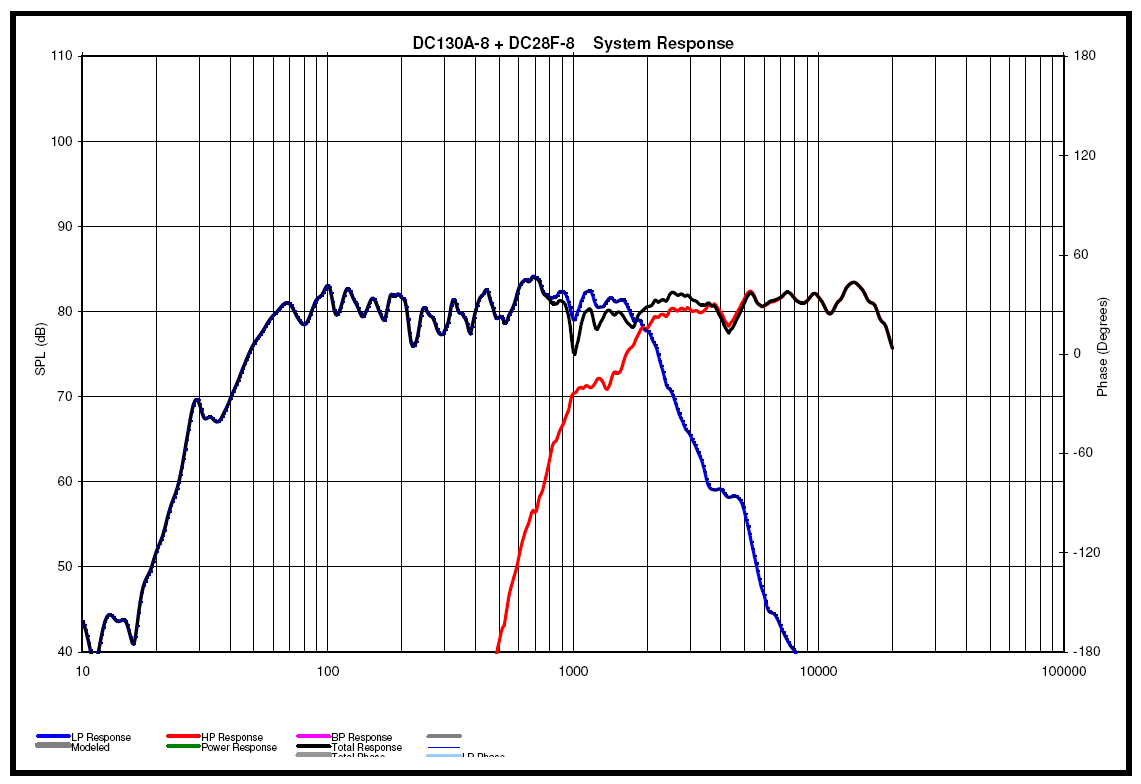
Here is the Impulse Response Step Response from Xsim using the FRD file from PCD:
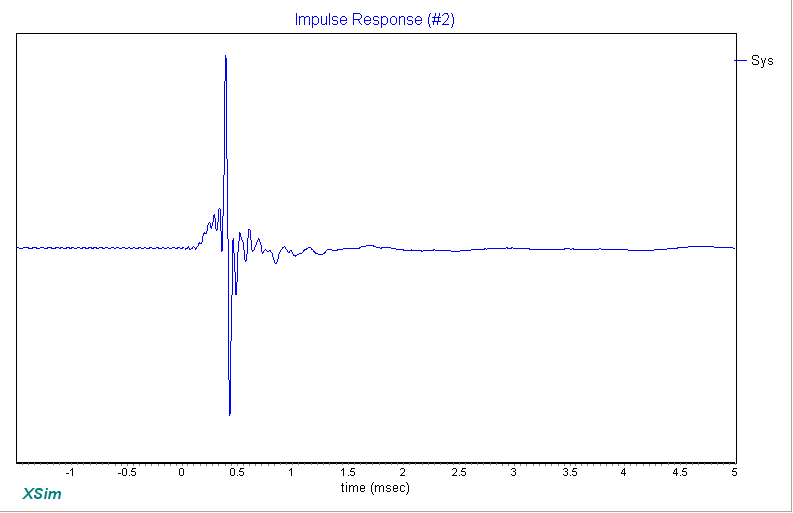
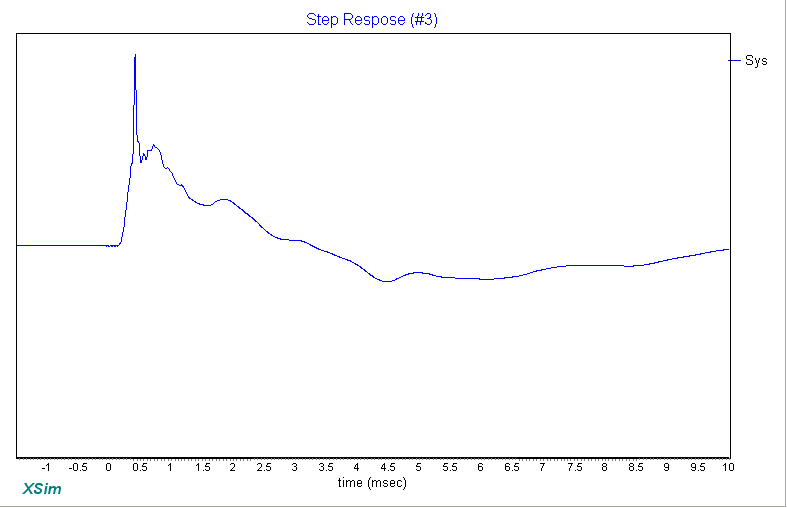
This is my first passive XO designed from scratch, so probably can use a lot of help.
I had some time to play around with PCD and managed to get this passive XO for this speaker. I am using a stepped front baffle with a 13.5cm setback (maybe a WG would be best way to achieve this?) on the tweeter, and 2nd order BW electrical on both woofer and tweeter to get 4th order BW acoustic on the woofer and 2nd order BW acoustic (should be Bessel) on the tweeter. The result is a quasi-transient perfect sort-of-a-Harsch XO.

Here is the Impulse Response Step Response from Xsim using the FRD file from PCD:


This is my first passive XO designed from scratch, so probably can use a lot of help.
Attachments
Last edited:
Asked this before but are lower QTS drivers at all usable in TLs? I realise they wd have to use a lot less stuffing etc something like the NE149-4
Sent from my iPhone using Tapatalk
Sent from my iPhone using Tapatalk
Last edited:
If a driver was designed for a vented alignment like BR, it can be optimized for a TL. The amount of damping material is dependent on the driver.
I had some time to play around with PCD and managed to get this passive XO for this speaker. I am using a stepped front baffle with a 13.5cm setback (maybe a WG would be best way to achieve this?) on the tweeter, and 2nd order BW electrical on both woofer and tweeter to get 4th order BW acoustic on the woofer and 2nd order BW acoustic (should be Bessel) on the tweeter. The result is a quasi-transient perfect sort-of-a-Harsch XO.

Here is the Impulse Response Step Response from Xsim using the FRD file from PCD:


This is my first passive XO designed from scratch, so probably can use a lot of help.
Here is the XO diagram as drawn in Xsim:
Attachments
Disregard above diagram - my typo - left off the HPF section!
This one should be better.
Given the high parts count, without even pricing the parts, I can say that this XO is probably going to cost more than a miniDSP and two class D amps. If one had access to scrap magnet wire from a surplus trafo, home made inductors and non-polarized electrolytic caps can bring the price down.
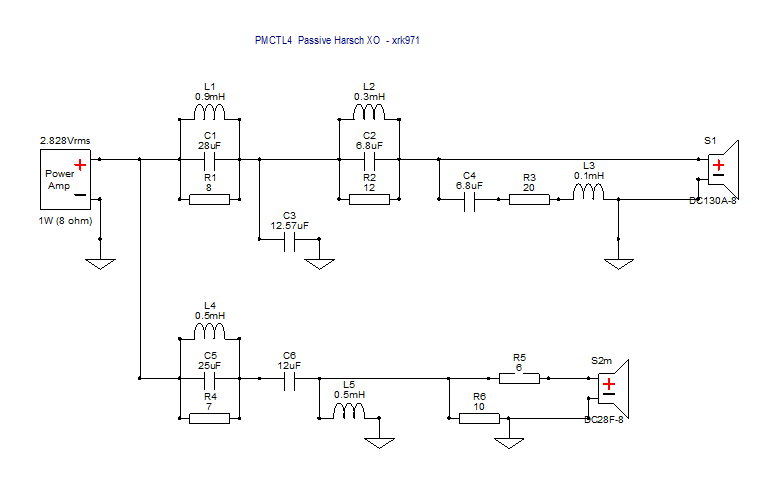
Here is the electrical impedance that the amp will see:
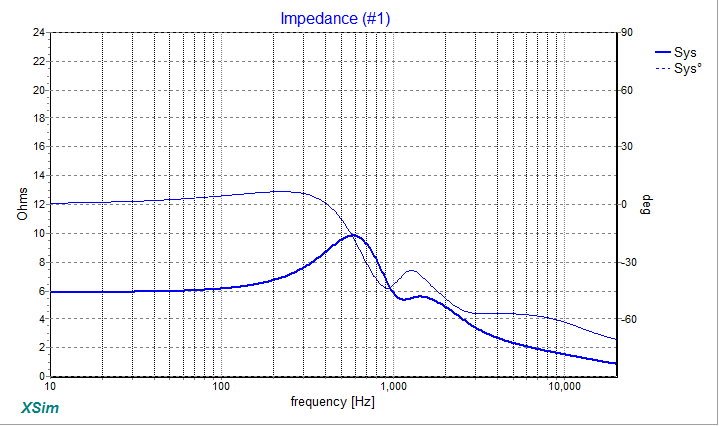
Not sure why the impedance at HF's is so low?
This one should be better.
Given the high parts count, without even pricing the parts, I can say that this XO is probably going to cost more than a miniDSP and two class D amps. If one had access to scrap magnet wire from a surplus trafo, home made inductors and non-polarized electrolytic caps can bring the price down.

Here is the electrical impedance that the amp will see:

Not sure why the impedance at HF's is so low?
Attachments
Last edited:
Member
Joined 2009
Paid Member
Given the high parts count
The XO in the PMC photo's don't appear to have that many parts in 'em ?
They weren't shooting for a Harsch transient perfect xo. Also I used probably too many notch filters to flatten response. I could make it simpler and forgo transient perfect. Parts count would go down and baffle would be flat.
.....Not sure why the impedance at HF's is so low?
At HF a capacitor given its value and ESR is a AC short so when amp look through C1/C3 it has direct HF-AC-SHORT to ground, maybe try if C3 will keep your filter slope design funchtion adding some x,xx R value in electric series to C3, or a x,xx value inductor that hinders HF can pass the route.
Most often a passive electric 2. order high pass filter is capacitor followed by inductor CL or two set CR cascaded or high loss type two set RL cascaded.
Great thanks sharing, details at build pictures all the bits and pieces is stunning handmade foam core work, sound clip post 25 sounds very good and pure.
- Home
- Loudspeakers
- Multi-Way
- Low-Cost PMC-inspired TL Monitor with DC130A and DC28F
